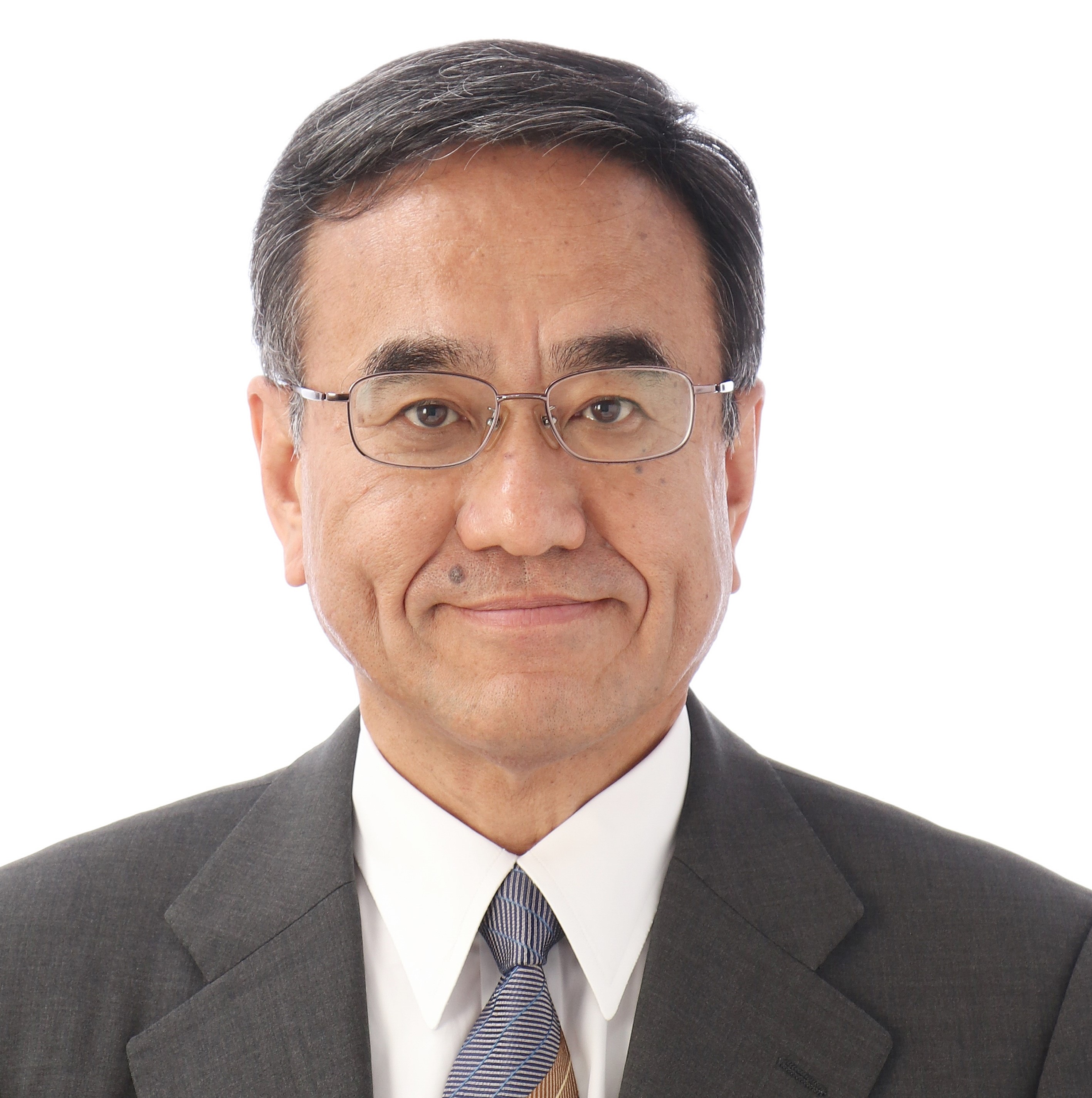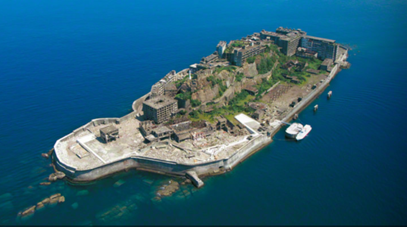PEOPLE
The Road to World Heritage Registration was Full of its Ups and Downs ~Blessed, Saved and Paved by the Luck of Human Fate~

Advisor, Federation of Japan Port and Airport Construction Association
(Ex. Chairman of Specialists Center of Port and Airport Engineering)
July, 1952 Born in Nagasaki-City, Nagasaki Prefecture
Having graduated from Postgraduate School of Engineering, Kyoto University in 1978, joined Ministry of Transportation (currently, Ministry of Land, Infrastructure, Transport and Tourism)
After serving as Director General of the Port and Harbor Bureau of the Ministry of Land, Infrastructure, Transport and Tourism, appointed as Deputy Director General for Technical Affairs, Minister's Secretariat of the Ministry, before retiring in 2013.
Later served as an advisor to Nippon Steel Corporation (currently, Nippon Steel Corporation) and Nippon Steel Engineering Corporation (currently, now Nippon Steel Engineering), as well as Chairman of the Federation of Japan Port and Airport Construction Association and President of Specialists Center of Port and Airport Engineering. Currently, he serves as an advisor of Federation of Japan Port and Airport Construction Association.
The response was initially very harsh.
Kato: Was it 2009 when I first met you? It was when you were appointed Director-General of the Security Bureau of the Ministry of Land, Infrastructure, Transport and Tourism.
Hayashida: I remember we had lunch together at the International House of Japan in Roppongi because Mr. Satoshi Iwamura, the Administrative Vice-Minister at the time, had someone he wanted to introduce to me. We had a very friendly lunch together there, and I only heard that he was working on the 'Sites of Modern Cultural and Industrial Heritage in Kyushu and Yamaguchi' (later renamed 'Sites of Japan’s Meiji Industrial Revolution').
Kato: Looking back, it was truly a fateful encounter that ultimately determined the outcome and there were many phases.
Hayashida: Yes, it was. After that, you visited the Ministry of Land, Infrastructure, Transport and Tourism, and that was the second time we met?
Kato: Yes. I visited there with Mr. Pearson, who was the President of ICOMOS at the time. I explained to you about our concrete plans for the World Heritage Site registration, and you gave me a very stern response. It gave me the impression that you frowned upon ICOMOS.
Hayashida: That is a misunderstanding. In fact, at the time, there was a plan in progress to bury a bit of the old harbour in order to build a road through Tomonoura, but the project had run into a deadlock due to opposition from ICOMOS. That is why when I just heard of ICOMOS, I immediately associated it with the idea that it would not be easy to get things moving. I had no particular feelings about ICOMOS itself. In fact, regardless of ICOMOS, the road to World Heritage listing was a long and difficult one, wasn't it?
Kato: The first problem was that the Agency for Cultural Affairs, which has jurisdiction over World Heritage registration, denied it. From the beginning, I had thought that the operating assets of the late Meiji period - the Mitsubishi Nagasaki Shipyard, the Yawata Steel Works and the Port of Miike - were indispensable, and I had announced a proposal that the component assets of Kyushu and Yamaguchi should be nominated together as a World Heritage Site. In Japan, it was customary to make a single nomination, for example, for the Kinkakuji Temple, but we knew that there were examples of serial nominations in the world, so we took the view that it was possible. However, the Agency for Cultural Affairs was very conservative about something that had no precedent in Japan.
Hayashida: Moreover, they want to include operational assets, including the Port of Miike, in the component assets, which may have been perceived as too far-fetched an idea. Even the owner cannot tamper with a single nail without permission when it becomes a national cultural asset. Everyone thought that even operating assets would be frozen without exception, you know.
Kato: I knew it would be difficult to gain understanding, so I was looking for a way forward and learning that the legal framework of port law could be applied to preserve them. In the world, there is a system called the Strategic Framework, which involves all ministries, for example, urban planning, and makes it possible to register operational assets on the World Heritage List. When we told the Agency for Cultural Affairs this and showed them concrete examples from around the world where properties are preserved under various legal systems other than the Law for the Protection of Cultural Properties, they were furiously opposed. Initially, this was not on the list of Cabinet decisions to be implemented by the Government.
Then, when we went to the Kyushu Development Bureau of the Ministry of Land, Infrastructure, Transport and Tourism to explain the situation, Director-General Hiroshi Okamoto was also concerned that “it would be a problem if an active important port, which is a key player in the local economy, became a cultural asset and could no longer be used.” I later confirmed this with the then Governor of Fukuoka Prefecture, Wataru Aso, who is the port administrator of the Port of Miike, but he told me that he wanted the “port to be available for use rather than a World Heritage Site.” The asset-owning companies, such as Mitsubishi Heavy Industries Ltd. and Nippon Steel Corporation, also responded in unison: “The World Heritage Site is an honour, but we don't want it to interfere with our production activities.” I remember being struck with a sense of intense frustration that if nothing was done, the project would be abandoned.

Director, National Council of Industrial Heritage
President, Duke Estate Co.Ltd.
Representative Director, National Congress of Industrial Heritage
(Honorary Advisor, Kyushu Railway Company (JR Kyushu)
Senior Researcher, Industrial Heritage Information Centre
Honorary Advisor, Nippon Mining Co., Ltd.
The Ambassador of Supporting Kamaishi Hometown
Former Director of Nagasaki City World Heritage Office
Former General Manager, Nagasaki Shipyard and Machinery Works, Mitsubishi Heavy Industries, Ltd.
Chairman, Fujisankei Group
Executive Managing Advisor, Fuji Television Network, Inc.
Executive Managing Advisor, Fuji Media Holdings, Inc.
Advisor, Federation of Japan Port and Airport Construction Association
(Ex. Chairman of Specialists Center of Port and Airport Engineering)
Mayor of Nagasaki City
Former Director of the Sano Tsunetami Memorial Museum (currently known as Sano Tsunetami and the Mietsu Naval Dock History Museum)
Director of NPO Association for Thinking about Satoyama
Director of National Congress of the Industrial Heritage
Honorary Chief Priest Toshinari Ueda
Former Mayor of Omuta City
Archaeologist and Heritage Conservation Specialist
A fellow of the Japan Federation of Engineering Societies
Team Member of the Industrial Project Team Office for the Promotion of World Heritage Listing under Cabinet Secretariat
Governor of Kagoshima Prefecture
Mayor of Hagi City
Mayor of Uki City, Kumamoto Prefecture
The Former Employee of Nippon Steel Corporation
An Associate Professor of the Faculty of Science and Engineering in Iwate University
Chairman of the Tourist Guide Association of Misumi West Port
President of Kuraya Narusawa Co., Ltd.
Chairman of Izunokuni City Tourism Association
Director and General Manager of Gunkanjima Concierge
Producer of the Gunkanjima Digital Museum
Owner at Tōge Chaya
Chairman: Mr. Hidenori Date
President: Mr. Masahiro Date
Proprietor, Houraikan Inn
Representative Director of Egawa Bunko non-profit incorporated foundation
The 42nd head of the Egawa Family
Democratic Party for the People (DPP) Representative for Nagasaki Prefecture
President of the NPO, Way to World Heritage Gunkanjima
Representative Director
MI Consulting Group
President of Watanabe Production Group and Honorary Chair of Watanabe Productions Co., Ltd.
Member of the House of Councillors
Governor
Kagoshima Prefecture
World Heritage Consultant
Director and Dean, The Kyushu-Asia Institute of Leadership
Representative Director, SUMIDA, Inc.
Journalist, founder of the Shimomura Mitsuko Ikikata Juku School
Representative, Rally Nippon
Chairman, Sites of Japan’s Meiji Industrial Revolution World Heritage Route Promotion Council Director, National Congress of Industrial Heritage
Representative Director, General Incorporated Foundation National Congress of Industrial Heritage (Advisor, Public Interest Incorporated Foundation Capital Markets Research Institute)
Mayor of Nagasaki City
Policy Director at Heritage Montreal
World Heritage Consultant
Executive Director of Kogakuin University
Heritage Architect and International Consultant
Head of Data Acquisition at The Glasgow School of Art’s School of Simulation and Visualisation
Head of Industrial Heritage, Historic Environment Scotland, Edinburgh
Scottish Ten Project Manager, Historic Environment Scotland, Edinburgh
Mayor of Izunokuni City, Shizuoka Prefecture
Pro-Provost and Chairman of Council of the Royal College of Art. Heritage advisor of Canal & River Trust for England and Wales.
Dean of Tokyo Rissho Junior College
Professor emeritus of Keio University
Mayor of Kitakyushu City
At the 39th session of the World Heritage Committee convened in Bonn, Germany, from June 28 to July 8, 2015, the decision was approved to inscribe the Sites of Japan’s Meiji Industrial Revolution on the World Heritage list.
At a celebratory party held to mark the occasion, some of the primary promoters of the project spoke of their joy in achieving their goal and of the trials and tribulations to getting there.
Director and Managing Executive Officer, Hanshin Expressway Company Limited
Member, Board of Directors, National Congress of Industrial Heritage
Vice-Governor of Shizuoka Prefecture
Mayor of Hagi City
Chairman, Tokyo Metro Co., Ltd.
Mayor of Omuta City
Deputy Director-General, Lifelong Learning Policy Bureau, MEXT
Former Counsellor, Cabinet Secretariat
Mayor of Kamaishi City
Member, Board of Directors, National Congress of Industrial Heritage Counselor, Shimadzu Limited
Chairman of the Consortium for the World Heritage Inscription of Modern Industrial Heritage (Kyushu-Yamaguchi) and governor of Kagoshima Prefecture (as of 2015)